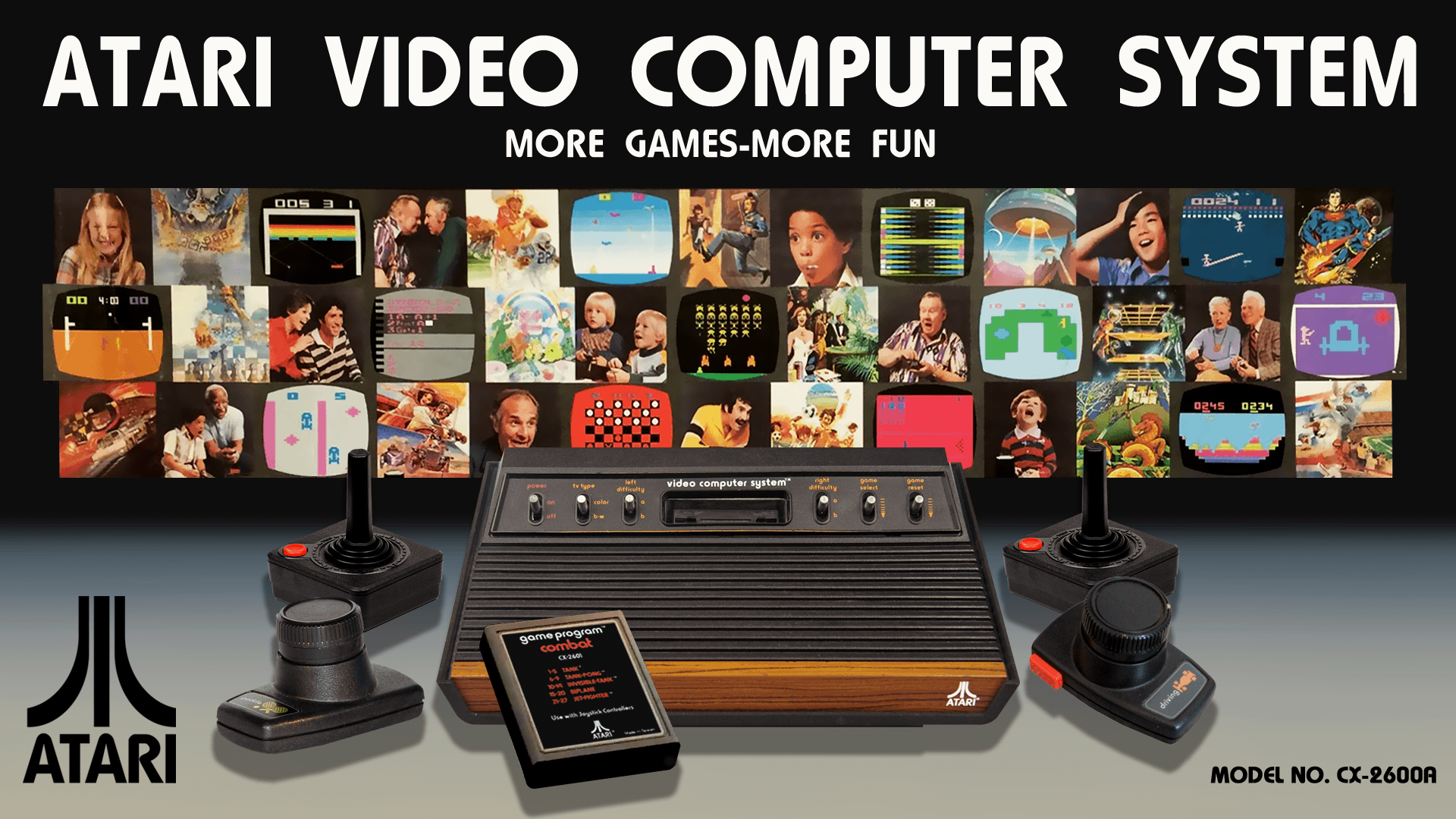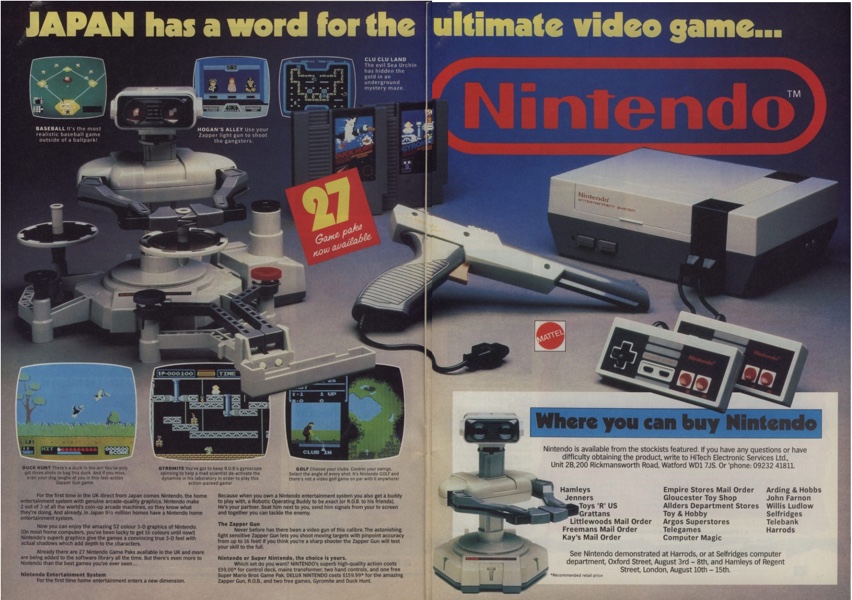Nintendo and the Video Game Crash of 1983 - "Now You're Playing With Power"
/The Video Game Industry Today
The global video game industry is as big as it’s ever been, generating about $135 billion in 2018. Mobile games contribute to the bulk of revenue, followed by consoles and PC. The home video game console is in the eighth generation with healthy competition between the big three, Nintendo, Sony, and Microsoft. Nintendo had a rough start with the Wii U (2012 release) but quickly outsold it with the Nintendo Switch (2017 release). Sony came out swinging with the PS4 (2013 release) and has sold 100 million units. Microsoft brought the U.S. back into the console market with the Xbox. Global revenues are projected to continue growing with an estimated $150 billion for 2019 as the eighth console generation comes to an end. While there have been no official announcements yet, the ninth console generation is approaching but the industry could have ended in 1983. Even during the early days, the industry was booming before coming to a sudden stop when the industry crashed.
The North American Video Game Crash
Atari joined the console market in 1977 with the release of the Atari Video Computer System (Atari 2600). The Atari 2600 did not take off until Atari began porting popular arcade games onto their console in 1980. Games such as Space Invaders, Missile Command, and Asteroids became million unit sellers. Other companies, especially those outside of video games, saw the potential of developing games and joined en masse. The rush contributed to a console market contested by over a dozen consoles. The market included the Magnavox Odyssey², Intellivision, Coleco Vision, Atari 5200, and the Vectrex to name a few. The crowded market saw its biggest competition not from other consoles but from the home computer. Consoles only played video games while computers offered more at a similar price.
As a direct result of too many consoles, there were also too many games with each manufacturer developing games for their own console. Atari’s refusal to credit their programmers led to the creation of the first third-party developer, Activision, known today for their Call of Duty series. Other programmers took note of Activision and began developing their own games further adding to the increasing piles of games in stores. The lack of publishing control from console manufacturers and rushed video games made by just about anyone including Quaker Oats, Purina, and Kool-Aid flooded the market with subpar video games.
Even Atari’s massive success couldn’t save them from the release of two of the most well-known subpar video games. Atari acquired the rights to port Pac-Man (1982 release) from the arcades to their Atari 2600. Riding on the hype, Atari produced 12 million copies of the game when they had 10 million consoles in homes. Atari believed 2 million people would buy an Atari 2600 just to play Pac-Man. Despite becoming the highest selling game on the console at 7 million units sold, it was negatively received as it barely looked like the arcade version. Atari was left with 5 million unsold copies.
Atari also heavily invested in E.T. (1982 release) due to the popularity of the film. One programmer, Howard Scott Warshaw, worked on the game for about six weeks in order to release it during the holiday season. Warshaw stated, “The bosses believed that as long as we put anything out the door with ET's name on, it would sell millions and millions.” E.T. did sell a few million copies but the rushed development time was clear. The game received critical negative reception over its poor gameplay, graphics, and story. Today, E.T. is regarded as one of the worst video games in history.
The Aftermath: Enter Nintendo
Atari suffered major losses by 1983 with a reported $310 million. E.T. and the rest of the excess stock found home in a dump near Alamogordo, New Mexico. Atari never released any sort of statement at the time which led to the urban legend of the video game burial. The other companies discontinued their consoles and some left the market. The industry suffered the most while consumers had discounted games. Retailers dropped the prices on games from about $40 to $4. Revenues for the North American market peaked at about $3.2 billion then saw a massive drop to $100 million in 1985.
Meanwhile, over in Japan, Nintendo released their first home console, the Family Computer (Famicom) in 1983. The Famicom found its way into about 2.5 million homes by 1985. Given its popularity, Nintendo planned to release it in the U.S. but would have to overcome the obstacles of the Video Game Crash. Nintendo redesigned the Famicom specifically for North America to resemble other contemporary tech, like a VCR.
Atari’s mistakes were noted which led to the lockout chip to restrict unlicensed games, along with the Nintendo Seal of Quality. The name, Nintendo Entertainment System (NES) was chosen to distance themselves from video game consoles. This wasn’t just another console, it was an, “Entertainment System.” Nintendo pushed the entertainment angle by marketing the NES with accessories such as the Zapper light gun and R.O.B the Robot Operating Buddy.
The NES saw a limited, but successful, release in New York on October 18, 1985 and a wide release by the end of 1986. The NES basic set included two controllers and a little game known as Super Mario Bros. Nintendo accounted for $310 million of $430 million industry sales in 1986. Nintendo proved that the industry was not dead and regained consumers’ confidence. The success of the NES ended the Video Game Crash and started the third generation of video games. Nintendo fought a tough battle against the video game crash but their biggest fight was yet to come. Their success turned the market from American dominance to Japan. Other Japanese competitors, namely Sega, entered the market and would become Nintendo’s biggest rival throughout the 80s in the console wars.
For more Video Game Media, watch and subscribe to TooDankBro on Youtube




